History

 When my husband, Bob and I went to Alaska a few years ago, I was hoping against hope that we would be able to see the Aurora Borealis. The likelihood was slim, of course, because they are most often visible in the winter and we were there in the summer. The Aurora Borealis is caused by solar flares, which occur when pent up magnetic energy on the sun’s surface is unleashed in blasts of radiation and charged particles. The resulting explosions are equivalent to the force of millions of hydrogen bombs, and the solar winds they create have the ability to wreak havoc on Earth’s atmosphere. That was precisely what happened in late August and early September of 1859, when the planet was bombarded by the largest solar storm on record. The so-called “Carrington Event” was named for the British astronomer, Richard Carrington, and it made the skies glow with shimmering, multi-colored auroras as far south as Hawaii. In Colorado, it was so bright that one witness reported people “could easily read common print” at night. And that was in August and September!! Why couldn’t I have been around to see that one?
When my husband, Bob and I went to Alaska a few years ago, I was hoping against hope that we would be able to see the Aurora Borealis. The likelihood was slim, of course, because they are most often visible in the winter and we were there in the summer. The Aurora Borealis is caused by solar flares, which occur when pent up magnetic energy on the sun’s surface is unleashed in blasts of radiation and charged particles. The resulting explosions are equivalent to the force of millions of hydrogen bombs, and the solar winds they create have the ability to wreak havoc on Earth’s atmosphere. That was precisely what happened in late August and early September of 1859, when the planet was bombarded by the largest solar storm on record. The so-called “Carrington Event” was named for the British astronomer, Richard Carrington, and it made the skies glow with shimmering, multi-colored auroras as far south as Hawaii. In Colorado, it was so bright that one witness reported people “could easily read common print” at night. And that was in August and September!! Why couldn’t I have been around to see that one?
Most of us have seen pictures of the Northern Lights, also known as the Aurora Borealis. The scene is unforgettable offering an entrancing, dramatic, magical display of dancing lights that are varying in color and fascinate all who see it. It’s hard to believe that an explosion on the sun that sends out radioactive magnetic particles into the atmosphere is responsible for this dazzling natural phenomenon. Of course it is quite complicated. If all those particles were able to just hit the Earth, the event would be disastrous. “The aurora is caused by the interaction of high-energy particles (usually electrons) with neutral atoms in earth’s upper atmosphere. This process is similar to the discharge in a neon lamp, or the fluorescence of a television screen. The strongest auroras are quite bright, comparable to moonlight. At the center of the sun, the temperature is 27 million degrees Fahrenheit (15 million degrees Celsius). As the temperature on its surface rises and falls, 
 the sun boils and bubbles. Particles escape from the star from the sunspot regions on the surface, hurtling particles of plasma, known as solar wind, into space. It takes these winds around 40 hours to reach Earth. When they do, they can cause the dramatic displays known as the aurora borealis.” However it all happens, is pretty much irrelevant to most of us, we just like the beauty of the Aurora Borealis, and we will continue to be mesmerized by them.
the sun boils and bubbles. Particles escape from the star from the sunspot regions on the surface, hurtling particles of plasma, known as solar wind, into space. It takes these winds around 40 hours to reach Earth. When they do, they can cause the dramatic displays known as the aurora borealis.” However it all happens, is pretty much irrelevant to most of us, we just like the beauty of the Aurora Borealis, and we will continue to be mesmerized by them.

 Following instructions and paying close attention to those instructions are crucial to the safe operation of a plane, especially at take offs and landings. When the pilot of Comair Flight 5191 taxied to the runway of his takeoff, something went horribly wrong. He was told to proceed to Runway 22, but he turned one lane too early, and ended up taking off on Runway 26, which was too short for a safe take off of a plane of that size. Comair 1591, was a CRJ-100ER plane that was carrying 47 passengers and 3 crew members. Instead of using runway 22 as expected, they used runway 26 which had too short of a path for a safe takeoff, even though Captain Jeffrey Clay confirmed using runway 22. He inadvertently took a left too early according to the map. At Blue Grass Airport in Lexington, Kentucky, on August 27, 2006, 49 of the 50 passengers and crew died while taking off from the airport. It’s hard to say at what point the pilot knew he was in trouble, but as the plane reached the end of the runway, they knew that there had not been enough time to gt the plane up to speed,and they simply couldn’t get enough lift to get it safely in the air. “They must have almost cleared the fence because only the top of it was missing and then the tips of some trees further out were also burnt off,” said Nick Bentley, who owns the 115-acre farm where the plane crashed, referring to an 8-foot metal fence that separates his property from the airport’s 3,500-foot runway.
Following instructions and paying close attention to those instructions are crucial to the safe operation of a plane, especially at take offs and landings. When the pilot of Comair Flight 5191 taxied to the runway of his takeoff, something went horribly wrong. He was told to proceed to Runway 22, but he turned one lane too early, and ended up taking off on Runway 26, which was too short for a safe take off of a plane of that size. Comair 1591, was a CRJ-100ER plane that was carrying 47 passengers and 3 crew members. Instead of using runway 22 as expected, they used runway 26 which had too short of a path for a safe takeoff, even though Captain Jeffrey Clay confirmed using runway 22. He inadvertently took a left too early according to the map. At Blue Grass Airport in Lexington, Kentucky, on August 27, 2006, 49 of the 50 passengers and crew died while taking off from the airport. It’s hard to say at what point the pilot knew he was in trouble, but as the plane reached the end of the runway, they knew that there had not been enough time to gt the plane up to speed,and they simply couldn’t get enough lift to get it safely in the air. “They must have almost cleared the fence because only the top of it was missing and then the tips of some trees further out were also burnt off,” said Nick Bentley, who owns the 115-acre farm where the plane crashed, referring to an 8-foot metal fence that separates his property from the airport’s 3,500-foot runway.
Shortly after 6am, Comair flight 1591 crashed in a field just half a mile from the Blue Grass Airport in an area of Kentucky known for its horse farms and the Keeneland Race Course. The plane was traveling from Lexington to Atlanta, when it went down. Peggy Young, who lives on Rice Road, near the area where the plane came down, said that just after 6am she and her husband Michael were awakened by the sound of the crash. “There was a loud explosion,” she said in a telephone interview. “We thought it was just a storm, but then we thought it was too loud to be a storm because it had just barely rained. We just were sleeping in when the phone rang and it was Keeneland security and they told my husband there had been an airplane crash.”
First Officer James Polehinke was the only survivor of the crash. He suffered broken bones, a collapsed lung, 
 and severe bleeding. In the end, the ultimate blame was put on the captain, because he didn’t abort liftoff despite questioning his surroundings. Nevertheless, the airport was found to be using outdated maps and had needed to improve runway markings and conditions.So in reality there was blame to go around, and because of the errors, 49 people lost their lives that day in August, twelve years ago. “The whole airport shut down from Aug. 18 to 20,” said Brian Ellestad, the director of marketing and community relations.
and severe bleeding. In the end, the ultimate blame was put on the captain, because he didn’t abort liftoff despite questioning his surroundings. Nevertheless, the airport was found to be using outdated maps and had needed to improve runway markings and conditions.So in reality there was blame to go around, and because of the errors, 49 people lost their lives that day in August, twelve years ago. “The whole airport shut down from Aug. 18 to 20,” said Brian Ellestad, the director of marketing and community relations.
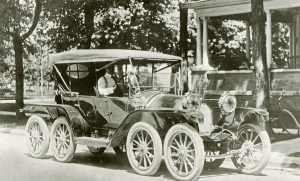
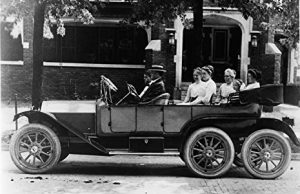 With the invention of the automobile, came the need to make improvements on things like speed, reliability, and looks. Most of the improvements that were made seemed to make sense and improved the automobile, but its been said that, “The line between visionary or eccentric, between progressive thinking, and outright insanity is often quite thin.” During the years when the American automobile industry was rapidly forming, the “unbridled manifestations of a creative imagination” blurred that line on thousands of occasions.
With the invention of the automobile, came the need to make improvements on things like speed, reliability, and looks. Most of the improvements that were made seemed to make sense and improved the automobile, but its been said that, “The line between visionary or eccentric, between progressive thinking, and outright insanity is often quite thin.” During the years when the American automobile industry was rapidly forming, the “unbridled manifestations of a creative imagination” blurred that line on thousands of occasions.
One such “blurring” involved the number of wheels on a automobile. Oddly, that is something that is still under debate today, with the dually pickup. I guess I can see how four wheels on the rear of a vehicle, set side by side, might give more traction, but some of the extra wheels designs of the vehicles in the past, simply made no sense to me. One of the more eccentric of those designs was the eight-wheeled Octoauto. It sported an astounding 180-inch wheelbase. Another example was the six-wheeled Sextoauto, devised by Milton O. Reeves. At the very least, these cars were goofy looking, and the designs seemed to have no exact reason or purpose for the placement of the wheels.
Another example, of the visionary side of the inventive line would be the optional swing away, electrically heated steering wheel available on the 1917 McFarlan. I guess I can see the value in that, especially on a cold winter day. There is nothing worse than toughing a freezing cold steering wheel, except maybe a burning hot one. Benjamin Briscoe of the Jackson, Michigan, based at Briscoe Motor Corporation, straddled the line quite nicely when he built the 1914 models. The 1914 models sported a single Cyclops headlight mounted dead center in the upper radiator shell and laminated paper-mâché body panels…that’s right, I said paper-mâché. The 1916 models sold with four cylinder engines and a promotion proclaiming, “Buy the Four. Use it a month. If then you decide you want the Eight, simply pay the difference and a small installation fee.” Sometimes, what appears to be eccentric today was innovative technology during the first decades of the industry. Promoted as, “The Friction Drive Car” was the 1907 Lambert, a vehicle that served to pioneer the type of transmission capitalized on with the patented developments of Byron Carter.
Between the creation of the first experimental models by William Lambert in 1891 and the companies’ closing in 1917, a wide array of “interesting” vehicles rolled from the companies manufacturing facilities in Anderson, 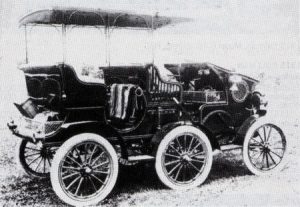
 Indiana. They had engines mounted in the rear, the front, or middle, and came in two-cylinder and four-cylinder configuration, providing power to one or two wheels, dependent on if it were a three-wheel or four-wheel model. I’m sure that along the way there were a number of other interesting and even strange ideas concerning the automobile, but I guess that’s progress, and some of them weren’t progress at all, but a step backward.
Indiana. They had engines mounted in the rear, the front, or middle, and came in two-cylinder and four-cylinder configuration, providing power to one or two wheels, dependent on if it were a three-wheel or four-wheel model. I’m sure that along the way there were a number of other interesting and even strange ideas concerning the automobile, but I guess that’s progress, and some of them weren’t progress at all, but a step backward.
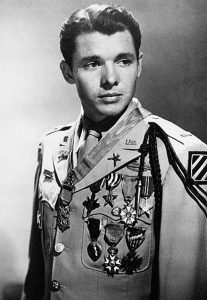 Recently, I found out that I am related to Audie Murphy, who was one of the most decorated American combat soldiers in World War II. As it turns out, he is my 7th cousin 3 times removed, on my dad’s side of the family. We share the same grandfather, Thomas Fuller, who is my 9th great grandfather, and Audie’s 7th great grandfather. Audie became an actor in 1948 and 1969, during which time he was beloved by many people, including my parents. I think they would have been very excited to find out that he was actually related to them, but then I guess they already know it by now. While his acting was impressive, it was his military career that always impressed my parents.
Recently, I found out that I am related to Audie Murphy, who was one of the most decorated American combat soldiers in World War II. As it turns out, he is my 7th cousin 3 times removed, on my dad’s side of the family. We share the same grandfather, Thomas Fuller, who is my 9th great grandfather, and Audie’s 7th great grandfather. Audie became an actor in 1948 and 1969, during which time he was beloved by many people, including my parents. I think they would have been very excited to find out that he was actually related to them, but then I guess they already know it by now. While his acting was impressive, it was his military career that always impressed my parents.
Audie Leon Murphy, was born on June 20, 1925 to Josie Bell Killian and Emmett Berry Murphy in Kingston, Texas. He was born into a large family of sharecroppers. Before long, his father abandoned them, and then his mother died when he was a teenager. Murphy left school in fifth grade to pick cotton and find other work to help support his family. He was a skilled rifleman, and hunting became a necessity for putting food on the table.
After the Japanese attacked Pearl Harbor in 1941, Murphy’s decided that he wanted to help, but he was too young. His older sister helped him to falsify documentation about his birthdate in order to meet the minimum-age requirement for enlisting in the military, because he was only 16 at the time. He was turned down by the Navy and the Marine Corps, so he enlisted in the Army. He first saw action in the 1943 Allied invasion of Sicily. Then, in 1944 he participated in the Battle of Anzio, the liberation of Rome, and the invasion of southern France. Murphy fought at Montélimar and led his men on a successful assault at the L’Omet quarry near Cleurie in northeastern France in October. He received every military combat award for valor available from the U.S. Army, as well as French and Belgian awards for heroism. Murphy received the Medal of Honor for valor that he demonstrated at the age of 19 for single-handedly holding off an entire company of German soldiers for an 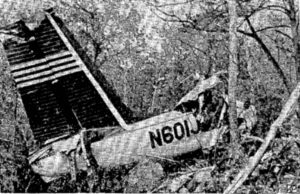 hour at the Colmar Pocket in France in January 1945, then leading a successful counterattack while wounded and out of ammunition.
hour at the Colmar Pocket in France in January 1945, then leading a successful counterattack while wounded and out of ammunition.
After his acting career ended, Murphy, like many actors without work, experienced money problems, but still, he refused offers to appear in alcohol and cigarette commercials, because he did not want to set a bad example. He never let Hollywood take away his high moral standards. Murphy died in a plane crash in Virginia in 1971, shortly before his 46th birthday. Such a sad ending to an amazing life. He was interred with full military honors at Arlington National Cemetery. His grave is one of the most visited sites in the cemetery.
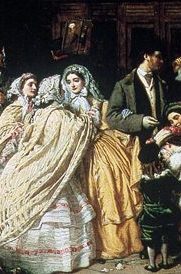 These days, with all the television shows about secret agents, undercover cops, and spies, most of us wouldn’t think twice about one of those positions being held by a woman. During the American Civil War, however, which basically coincided with the Victorian era, one of the most morally repressive eras in history for women, things were different. Everything from a woman’s dress to her education were tightly constricted by moral attitudes that governed her every action. Basically, women were to concentrate their “war efforts” on the task of supporting their husband, brothers, or fathers, in whatever their beliefs were toward the matter. However, as the war dragged on and more men were called into active duty, the farms, factories, stores, and schools were left without workers, so the women stepped up to stand in the gap, as it were. This was most surprising because, back then, women were considered too frail, and their minds too simple for things like politics and war. They were designed for keeping the home and taking care of the babies. Nevertheless, when the men were called into active duty, most of them would have lost their farms, homes, and businesses had it not been for the strength and intelligence of the of the “frail and simple” women. Many women refused to limit their assistance to their country to what could be accomplished close to home. Some of them became nurses, worked to raise supplies for their troops, or even worked in armories, but there was a number of these women decided to support their country in a more dangerous…and scandalous way…they became spies.Back then, espionage was considered a very dishonorable pursuit for a man during the Civil War era, but for a woman…it was tantamount to prostitution. Nevertheless, with the war raging, women of both the North and South flaunted the Victorian morality of the time to provide their country the intelligence it needed to make tactical and practical decisions.
These days, with all the television shows about secret agents, undercover cops, and spies, most of us wouldn’t think twice about one of those positions being held by a woman. During the American Civil War, however, which basically coincided with the Victorian era, one of the most morally repressive eras in history for women, things were different. Everything from a woman’s dress to her education were tightly constricted by moral attitudes that governed her every action. Basically, women were to concentrate their “war efforts” on the task of supporting their husband, brothers, or fathers, in whatever their beliefs were toward the matter. However, as the war dragged on and more men were called into active duty, the farms, factories, stores, and schools were left without workers, so the women stepped up to stand in the gap, as it were. This was most surprising because, back then, women were considered too frail, and their minds too simple for things like politics and war. They were designed for keeping the home and taking care of the babies. Nevertheless, when the men were called into active duty, most of them would have lost their farms, homes, and businesses had it not been for the strength and intelligence of the of the “frail and simple” women. Many women refused to limit their assistance to their country to what could be accomplished close to home. Some of them became nurses, worked to raise supplies for their troops, or even worked in armories, but there was a number of these women decided to support their country in a more dangerous…and scandalous way…they became spies.Back then, espionage was considered a very dishonorable pursuit for a man during the Civil War era, but for a woman…it was tantamount to prostitution. Nevertheless, with the war raging, women of both the North and South flaunted the Victorian morality of the time to provide their country the intelligence it needed to make tactical and practical decisions.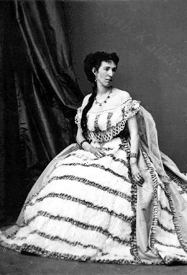
The most famous of these female spies was Belle Boyd…born Marie Isabella Boyd. She began spying for the Confederacy when Union troops invaded her Martinsburg, Virginia home in 1861. One of the Federal soldiers manhandled her mother, and Boyd shot and killed him. She was exonerated in the soldier’s death, and an emboldened Boyd managed to befriend the Union soldiers left to guard her, and used her slave, Eliza, to pass information confided in her by the soldiers along to Confederate officers. Boyd was caught at her first attempt at spying, and threatened with death, but she did not stop her activities. She vowed to find a better way instead. She began eavesdropping on union officers staying at her father’s hotel. She learned enough to inform General Stonewall Jackson about their regiment and activities. Taking no chances, this time, Boyd delivered her intelligence firsthand, moving through Union lines, and reportedly drawing close enough to the action to return with bullet holes in her skirts. The information she provided allowed the Confederate army to advance on Federal troops at Fort Royal. Boyd’s daring acts of espionage soon caught up with her again and when a beau gave her up to Union authorities in 1862, she was arrested and held in the Old Capitol Prison in Washington for a month. Then she released, but found herself in the arrested again soon after. Once again, she managed to be set free, and this time she traveled to England, where amazingly, she married not a Confederate soldier, but a Union officer.
Boyd wasn’t the only spy in the Civil War. Another famous female spy was nicknamed “Crazy Bet,” but her real 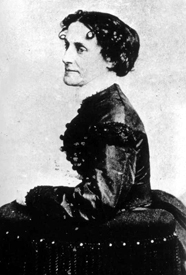 name was Elizabeth Van Lew. Van Lew was born to a wealthy and prominent Richmond family, and was educated by Quakers in Philadelphia. When she returned to Richmond, she had become an abolitionist. She even went so far as to convince her mother to free the family’s slaves. Her espionage activity began soon after the start of the war. Her neighbors were appalled, because she openly supported the Union. She concentrated her efforts on aiding Federal prisoners at the Libby Prison, by taking them food, books, and paper. Later, she smuggled information about Confederate activities from the prisoners to Union officers, including General Ulysses S. Grant. To hide her activities from her Confederate neighbors, she behaved oddly. She dressed in old clothes, talking to herself, and refusing to comb her hair. Believe it or not, people began to think she was insane. They started calling her “Crazy Bet.” Van Lew wasn’t insane, in fact, she was incredibly intelligent. She was hailed by Grant as the provider of some of the most important intelligence gathered during the war.
name was Elizabeth Van Lew. Van Lew was born to a wealthy and prominent Richmond family, and was educated by Quakers in Philadelphia. When she returned to Richmond, she had become an abolitionist. She even went so far as to convince her mother to free the family’s slaves. Her espionage activity began soon after the start of the war. Her neighbors were appalled, because she openly supported the Union. She concentrated her efforts on aiding Federal prisoners at the Libby Prison, by taking them food, books, and paper. Later, she smuggled information about Confederate activities from the prisoners to Union officers, including General Ulysses S. Grant. To hide her activities from her Confederate neighbors, she behaved oddly. She dressed in old clothes, talking to herself, and refusing to comb her hair. Believe it or not, people began to think she was insane. They started calling her “Crazy Bet.” Van Lew wasn’t insane, in fact, she was incredibly intelligent. She was hailed by Grant as the provider of some of the most important intelligence gathered during the war.
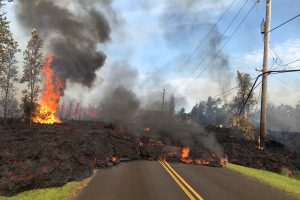 On this day, August 21, 1959, the United States as we know it was completed with the addition of the 50th State… Hawaii. It is the only state that is completely comprised of islands…volcanic islands. Hawaii has another unique feature besides being an island state. That unique feature is that it is the only state that is naturally increasing in size. Most of us immediately think of the current eruptions of Kilauea, and that is a big part of the grown of Hawaii, but it is not the only cause of the growth.
On this day, August 21, 1959, the United States as we know it was completed with the addition of the 50th State… Hawaii. It is the only state that is completely comprised of islands…volcanic islands. Hawaii has another unique feature besides being an island state. That unique feature is that it is the only state that is naturally increasing in size. Most of us immediately think of the current eruptions of Kilauea, and that is a big part of the grown of Hawaii, but it is not the only cause of the growth.
Not every addition to the Big Island involves an eruption that puts people at risk and engulfs their communities. For decades, Kilauea has experienced continuous lava flows through a vent called Pu?u ???? in Hawaii Volcanoes National Park, incrementally adding land to the southeast portion of the island. This continuous flow has added 570 acres of land to Hawaii’s Big Island since 1983, according to the U.S. Geological Survey’s most recent 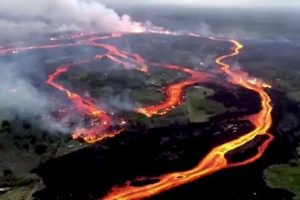 update. Unfortunately, the lava has also buried over 40 square miles of rain forest, communities, and historical sites. Hawaii is an ever-changing place, and the lava doesn’t care about such things as rain forests, communities, and historical sites.
update. Unfortunately, the lava has also buried over 40 square miles of rain forest, communities, and historical sites. Hawaii is an ever-changing place, and the lava doesn’t care about such things as rain forests, communities, and historical sites.
The current stories of the eruption of Kilauea has continued to shock the world, but in reality, Kilauea has been continuously erupting since 1983. Still, on May 3, 2018, the volcano erupted dramatically. The eruption occurred several hours after a magnitude-5.0 quake struck the Big Island. With the eruption came lava flows into residential subdivisions in the Puna district of the Big Island. This prompted mandatory evacuations of the Leilani Estates and Lanipuna Gardens subdivisions. Scientists have two theories about the formation of the Hawaiian Islands. Unlike most volcanoes, the Hawaiian chain sits squarely in the middle of the Pacific plate rather than on a tectonic boundary.
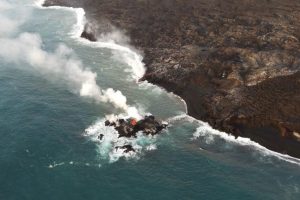
In 1963, J Tuzo Wilson proposed the “hotspot theory” to explain this unusual placement. Wilson proposed that the linear geography of the Hawaiian Islands is due to the movement of the Pacific plate over a stationary point of great heat from deep within the Earth. I have to wonder if that movement is exactly what is causing the current continuing flow of lava from Kilauea. I seems to me that it would be difficult for the lava flow to seal itself when the fault keeps breaking the seal. I could be totally wrong, or I could just be looking at this in a far too simplistic manner. Nevertheless, it seems logical to me. Or maybe that is exactly what Wilson was saying.
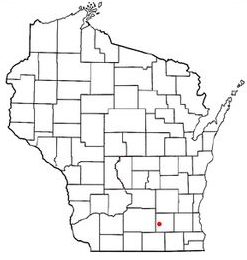 When we think of rain showers, most of us think of a pleasant spring or summer afternoon when the day is hot, and the rain cools things down, and everything smells so good, but on a beautiful April day in 1897 in Jefferson County, Wisconsin, and particularly in the town of Palmyra, the shower they received was not so pleasant. That morning, after a shower overnight, residents woke up expecting to see puddles of rainwater here and there, but instead the sight they saw was appalling. It was like nothing they had ever seen before.
When we think of rain showers, most of us think of a pleasant spring or summer afternoon when the day is hot, and the rain cools things down, and everything smells so good, but on a beautiful April day in 1897 in Jefferson County, Wisconsin, and particularly in the town of Palmyra, the shower they received was not so pleasant. That morning, after a shower overnight, residents woke up expecting to see puddles of rainwater here and there, but instead the sight they saw was appalling. It was like nothing they had ever seen before.
On the ground, the cars, and every other surface in the area were thousands of worms…and they weren’t worms anyone knew about. They were a strange species that was unknown to the area. There was no place that the people could walk without stepping on the disgusting worms. People even had them in barrels that were designed to catch rainwater for drinking, so the drinking water was compromised too. Finally an expert fisherman and gardener, named Captain McDonald, told the people that they were Gilt-Edge Worms. He said that he could tell by their yellow and gold spots and rings. He said that he had used these particular worms for bait while fishing in Ireland.
Well, that was one thing, but Wisconsin is nowhere near Ireland, so how did they get there? Well, the people started to speculate that somehow the worms must have drifted across the ocean in a cloud, but when you think about it, that is an odd thought. Nevertheless, after having watched a story on The Weather Channel about a town that had fish fall out of the sky one time, and that they thought it might have been from a water spout that had scooped them up from a nearby water source, I suspect that something similar might have happened, although I don’t know if the same thing could have happened with a tornado over land, because I doubt if the Gilt-Edge Worm is a water dwelling creature. I don’t suppose they will ever know exactly how the incredible worm shower happened for sure, but while it was a disgusting situation at the time, the townspeople soon decided 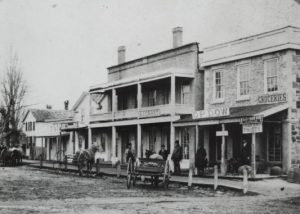 that they might as well make the best of it, and go fishing!!
that they might as well make the best of it, and go fishing!!
The captain told them that Trout found the worms particularly tasty, and hard to resist, especially in the muddy waters after a rainfall, so in very short order, the townspeople decided that it must have been Providence (another word for a gift from God) that brought the worms to their area so miraculously overnight, when trout fishing in the nearby lakes and streams was a universal pastime. So, after finding out about the worms value, I’m sure the people were a little more careful about where they were stepping, so they didn’t kill the worms that might help them catch more trout.
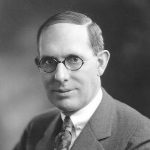 When the automobile first came out, driving them safely wasn’t the only difficulty. The early years of the automobile, found drivers using iron hand cranks to start the internal combustion process that powered the engines on their cars. Getting them started took great hand and arm strength, and the system was not without certain risks. Drivers who forgot to turn the ignition off before turning the crank, could be surprised when the car backfired or rolled forward. You may not know it, but at that time most vehicles had no brakes. Clearly a better system was needed, and in 1911 Cadillac head Henry M Leland gave Charles F Kettering the task of developing one. Kettering was the co-founder of Dayton Engineering Laboratories Company (DELCO) in Dayton, Ohio.
When the automobile first came out, driving them safely wasn’t the only difficulty. The early years of the automobile, found drivers using iron hand cranks to start the internal combustion process that powered the engines on their cars. Getting them started took great hand and arm strength, and the system was not without certain risks. Drivers who forgot to turn the ignition off before turning the crank, could be surprised when the car backfired or rolled forward. You may not know it, but at that time most vehicles had no brakes. Clearly a better system was needed, and in 1911 Cadillac head Henry M Leland gave Charles F Kettering the task of developing one. Kettering was the co-founder of Dayton Engineering Laboratories Company (DELCO) in Dayton, Ohio.
Before founding DELCO with his partner Edward Deeds in 1909, Kettering worked at the National Cash Register Company. While there, he helped develop the first electric cash register. I’m sure that was what called attention to him when Leland was looking for the right inventor for his project. Kettering drew on his experience with the cash register, when approaching his work with automobiles. The new invention wasn’t that big a leap from the cash register either. Just as the touch of a button had started a motor that opened the drawer of the cash register, Kettering would eventually use a key to turn on his self-starting motor. The self-starter was introduced in the 1912 Cadillac, patented by Kettering in 1915, when he was issued U.S. Patent No. 1,150,523 for his “engine-starting device,” the first electric ignition device for automobiles, on August 17, 1915.
The device worked so well that by the 1920s, it would come standard on nearly every new automobile. The device made cars easier and safer to operate, especially for women. The new self-starting engine was a huge hit, and caused a big jump in sales. The new engine was responsible for the fast-growing automobile culture in America. United Motors Corporation, which would become General Motors, bought DELCO in 1916. Kettering was the vice president and director of research at GM from 1920 to 1947. The self-starting engine wasn’t the only invention Kettering headed-up. Other important auto-related innovations developed during Kettering’s  tenure were quick-drying automotive paint, spark plugs, leaded gasoline, shock absorbers, the automatic transmission, four-wheel brakes, the diesel engine and safety glass. He helped develop the refrigerant Freon, used in refrigerators and air conditioners, and the Kettering home in Dayton was the first in the country to be air-conditioned. In the realm of medicine, Kettering created a treatment for venereal disease and an incubator for premature infants, and in 1945 he and longtime General Motors head Alfred P Sloan established the Sloan-Kettering Institute for Cancer Research in New York City. Charles F Kettering died in 1958, having made great contributions toward the improvement of many lives.
tenure were quick-drying automotive paint, spark plugs, leaded gasoline, shock absorbers, the automatic transmission, four-wheel brakes, the diesel engine and safety glass. He helped develop the refrigerant Freon, used in refrigerators and air conditioners, and the Kettering home in Dayton was the first in the country to be air-conditioned. In the realm of medicine, Kettering created a treatment for venereal disease and an incubator for premature infants, and in 1945 he and longtime General Motors head Alfred P Sloan established the Sloan-Kettering Institute for Cancer Research in New York City. Charles F Kettering died in 1958, having made great contributions toward the improvement of many lives.
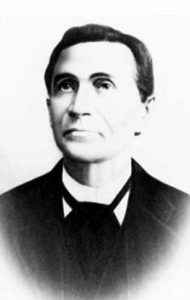 The other day, while reading an article about notable Native Americans, I came across a name that was familiar to me, but really didn’t seem like a Native American name. The name was Renville, the same name as my grand-nephew, James Renville. Immediately, I wondered if there might be a connection between Chief Gabriel Renville and my grand-nephew. The search didn’t take very long, before I had my answer. Gabriel Renville is my grand-nephew, James’ 1st cousin 7 times removed. I find that to be extremely amazing to think that James is related to an Indian chief. With that information, I wanted to fine out more abut this man.
The other day, while reading an article about notable Native Americans, I came across a name that was familiar to me, but really didn’t seem like a Native American name. The name was Renville, the same name as my grand-nephew, James Renville. Immediately, I wondered if there might be a connection between Chief Gabriel Renville and my grand-nephew. The search didn’t take very long, before I had my answer. Gabriel Renville is my grand-nephew, James’ 1st cousin 7 times removed. I find that to be extremely amazing to think that James is related to an Indian chief. With that information, I wanted to fine out more abut this man.
Chief Gabriel Renville was a mixed-blood Santee Sioux—his father was half French and his mother half-Scottish. He was born in April of 1825 at Big Stone Lake, South Dakota. Renville was the treaty chief of the Sisseton-Wahpeton Santee tribes and signed the 1867 treaty, which established the boundaries of the Lake Traverse Reservation. One source called him a Champion of Excellence.
He was careful to protect his people as much as he could, and was also instrumental in saving the lives of many white captives. During the 1862 Uprising, Renville opposed Little Crow and was influential in keeping many of the Santee out of the war. He lost a large amount of property, including horses appropriated by the hostile savages, or destroyed in consequence of his position to their murderous course. Renville served as chief of scouts for General Sibley during the campaign against the Sioux in 1863.
Even though Chief Renville was an ally of the whites, it didn’t help him when he settled on the reservation. The government agent there, Moses N. Adams, considered him hostile. Renville was the leader of the “scout party” which was in conflict with the “good church” Indians. I’m sure that was common in those days. Renville preserved many of the traditional Santee customs of polygamy and dancing, and he ignored Christianity, but he 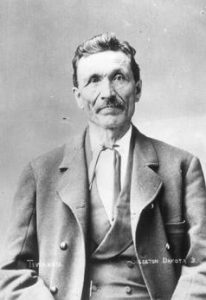 was not opposed to economic progress and he and his followers became successful farmers on the reservation. However, the Sisseton agent favored the “church” Indians.
was not opposed to economic progress and he and his followers became successful farmers on the reservation. However, the Sisseton agent favored the “church” Indians.
Renville and other leaders of the traditional Indians accused Adams of discriminating against them in the disposition of supplies and equipment. He said Adams favored the idle church-goers instead of encouraging them to work….a situation not unlike the current welfare system. Agent Adams considered Renville a detriment and removed the chief form the reservation executive board which Adams had organized to carry out his policies. It was a move that was considered extreme. In 1874 Renville was finally successful in securing a government investigation of the Adam’s activities. The outcome of the investigation was an official censure of Adams. Chief Renville continued to practice the old Santee customs, yet he encouraged the Indians to farm. This progressive influence was greatly missed after his death in August 1892.
 Most often, when we think of the early Americans, and their settlements, we think about the settlers who came over from Europe, but there were, of course, the many Indian tribes that existed here first. I’m not going to dispute whether the Indians or the White Man have more right to be here, because I truly believe that we should all be able to co-exist here after all these years, and that while treaties were broken many times, we have more than likely paid for this land a number of times, given the money that has been, and continues to be paid to the Native Americans. The oldest known culture in the United States was the Pueblo Indians, who lived in the Southwestern United States. Their name is Spanish for “stone masonry village dweller.” They are believed to be the descendants of three major cultures…the Mogollon, Hohokam, and Ancient Puebloans (Anasazi) Indians. I’m not sure how they would have come to be here, unless their ancestors were here first, but that is how the historians see it.
Most often, when we think of the early Americans, and their settlements, we think about the settlers who came over from Europe, but there were, of course, the many Indian tribes that existed here first. I’m not going to dispute whether the Indians or the White Man have more right to be here, because I truly believe that we should all be able to co-exist here after all these years, and that while treaties were broken many times, we have more than likely paid for this land a number of times, given the money that has been, and continues to be paid to the Native Americans. The oldest known culture in the United States was the Pueblo Indians, who lived in the Southwestern United States. Their name is Spanish for “stone masonry village dweller.” They are believed to be the descendants of three major cultures…the Mogollon, Hohokam, and Ancient Puebloans (Anasazi) Indians. I’m not sure how they would have come to be here, unless their ancestors were here first, but that is how the historians see it.
Over the years, the Ancient Puebloans, who had been a nomadic, hunter-gathering society, evolved into a sedentary culture. They made their homes in the Four Corners region of Colorado, New Mexico, Utah and Arizona. The Puebloans continued to hunt, but they also expanded to agriculture. They grew maze, corn, squash, and beans. They also raised turkeys and even developed a fairly complex irrigation system. They took up basket weaving and pottery, and became quite skilled in both. About this time, they began building the  buildings we think about when we think of the Pueblo Indians…villages, often on top of high mesas or in hollowed-out natural caves at the base of canyons. These multiple-room dwellings and apartment like complexes, designed with stone or adobe masonry, were the forerunner of the later pueblos.
buildings we think about when we think of the Pueblo Indians…villages, often on top of high mesas or in hollowed-out natural caves at the base of canyons. These multiple-room dwellings and apartment like complexes, designed with stone or adobe masonry, were the forerunner of the later pueblos.
Sadly, even with their successful life changes, the Ancient Puebloans way of life declined in the 1300’s, probably due to drought and inter-tribal warfare. They migrated south, primarily into New Mexico and Arizona, becoming what is today known as the Pueblo people. For hundreds of years, these Pueblo descendants lived a similar lifestyle to their ancestors. They continued to survive by hunting and farming, and also building “new” apartment-like structures, sometimes several stories high. These new structures were made of cut sandstone faced with adobe, which is a combination of earth mixed with straw and water. Sometimes, the adobe was poured into forms or made into sun-dried bricks to build walls that are often several feet thick. The buildings had flat roofs, which served as working or resting places, as well as observation points to watch for approaching enemies and view ceremonial occasions. For better defense, the outer walls generally had no doors or windows, but instead, window openings in the roofs, with ladders leading into the interior.
 Each family unit consisted of a single room of the building unless the family grew too large. Then side-rooms were sometimes added. The houses of the pueblo were usually built around a central, open space or plaza in the middle of which was a “kiva,” a sunken chamber used for religious purposes. Each pueblo was an independent and separate community. The different pueblos shared similarities in language and customs, but each pueblo had its own chief, and sometimes two chiefs, a summer and winter chief, who alternated. Most important affairs, such was war, hunting, religion, and agriculture, however, were governed by priesthoods or secret societies. Each pueblo was almost a separate country.
Each family unit consisted of a single room of the building unless the family grew too large. Then side-rooms were sometimes added. The houses of the pueblo were usually built around a central, open space or plaza in the middle of which was a “kiva,” a sunken chamber used for religious purposes. Each pueblo was an independent and separate community. The different pueblos shared similarities in language and customs, but each pueblo had its own chief, and sometimes two chiefs, a summer and winter chief, who alternated. Most important affairs, such was war, hunting, religion, and agriculture, however, were governed by priesthoods or secret societies. Each pueblo was almost a separate country.

